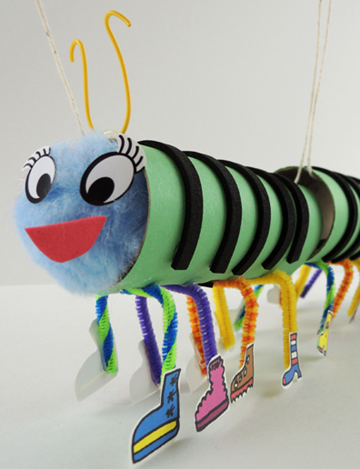 Sneakers, boots, bunny slippers, and galoshes. When you have 100 legs, you’re going to need a LOT of shoes. Good thing we have just the shoe store for you and your centipede marionette!
Sneakers, boots, bunny slippers, and galoshes. When you have 100 legs, you’re going to need a LOT of shoes. Good thing we have just the shoe store for you and your centipede marionette!
We read Centipede’s 100 Shoes by Tony Ross (Henry Holt, 2002). When little centipede stubs his toes, his mom tries to kiss it better…but exactly which toe is it? To avoid future stubbed toe incidents, little centipede and his mom head off to the shoe store. However, 100 shoes means 100 socks, 100 laces, 100 times putting shoes on, and 100 times taking shoes off. It’s just too much. So clever little centipede decides to forgo foot gear all together, distributing his shoes to friends with fewer leg hassles.
You’ll need:
- 3 toilet paper tubes
- Construction paper
- 4 pipe cleaners
- 1 centipede shoe template, printed on 8.5″ x 11″ card stock
- A length of curling ribbon (approximately 13″)
- A length of string (ours was approximately 4 ft)
- 1 wooden dowel
- Masking tape
- 1 jumbo pom-pom
- 1 set of eye stickers
- 1 snippet of twisteez wire or pipe cleaner
- Scissors and tape for construction
- Markers for decorating
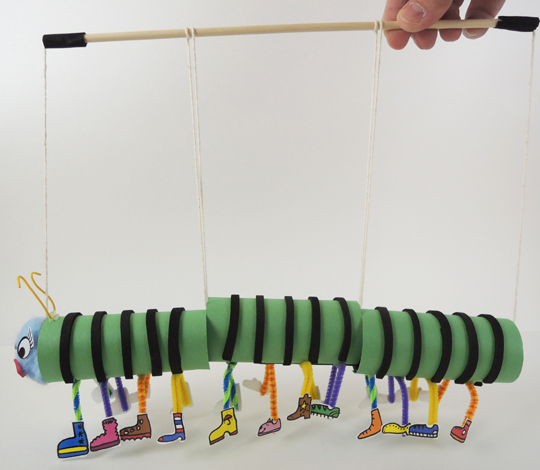
First, wrap 3 toilet paper tubes with construction paper. Use markers to add rings to the centipede’s body or bits of self-adhesive foam. Cut 4 pipe cleaners into 3rds, bend each piece into a U shape. At this point, you can add the shoes from the template to the ends of the legs, or your can do what we did and visit the centipede shoe store (which appears a little later in this post). Use tape to attach the legs to the undersides of the tubes.
Next, thread a 4″ piece of curling ribbon through the three tubes. Use tape to anchor the ribbon to the ends of the 1st and 3rd tube. This curling ribbon “spine” keeps the 3 tube segments of the marionette together, but also allows the centipede to be wiggly. You can see the green curling ribbon spine in the photo below:
 Katie came up with fantastic, easy method for stringing the marionette. Tie a 4 ft string to the end of a wooden dowel. Thread the string through the first tube, then loop it up and around the wooden dowel. Repeat this threading and looping through the second and third tubes, then tie the end of the string around the back end of the wooden dowel. Wrap the ends of the dowel in masking tape so the string doesn’t slide off. You can see the string loops in the photo below:
Katie came up with fantastic, easy method for stringing the marionette. Tie a 4 ft string to the end of a wooden dowel. Thread the string through the first tube, then loop it up and around the wooden dowel. Repeat this threading and looping through the second and third tubes, then tie the end of the string around the back end of the wooden dowel. Wrap the ends of the dowel in masking tape so the string doesn’t slide off. You can see the string loops in the photo below:
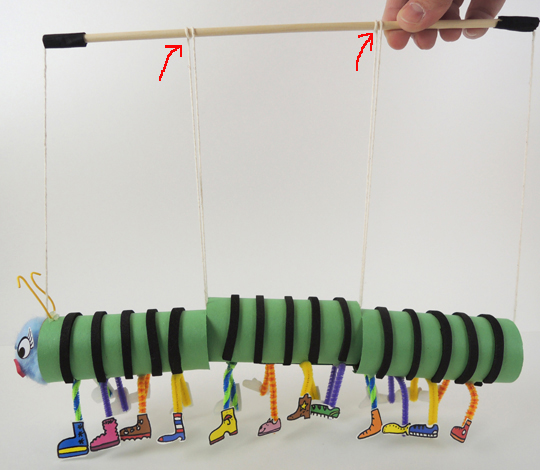 Last but not least, your centipede’s face. You don’t want to put the face on BEFORE you thread the marionette string, because the pom-pom will be blocking the end of the tube! the face is a jumbo pom-pom (which we hot glued in place), eye stickers, a self-adhesive foam smile, and twisteez wire antennae.
Last but not least, your centipede’s face. You don’t want to put the face on BEFORE you thread the marionette string, because the pom-pom will be blocking the end of the tube! the face is a jumbo pom-pom (which we hot glued in place), eye stickers, a self-adhesive foam smile, and twisteez wire antennae.
Earlier, I mentioned that you can put the centipede’s shoes on when first create the pipe cleaner legs. But we delayed that step so the kids could take their marionettes shopping at the Lots and Lots of Shoes store, which I created using a box lid!
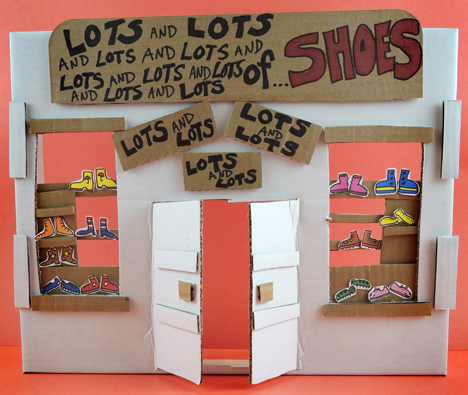 The kids walked over with their centipedes, and I slid the shoe templates through the front door of the shop.
The kids walked over with their centipedes, and I slid the shoe templates through the front door of the shop.
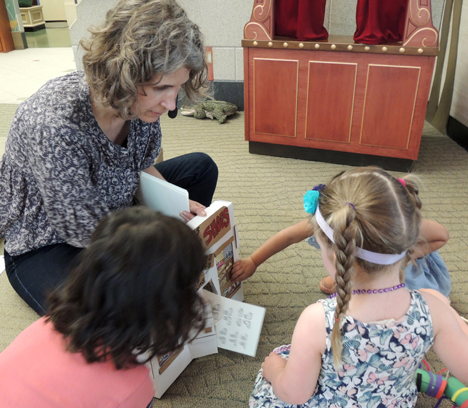 The shoes were then colored, cut, and taped the centipede’s legs. Admittedly, this marionette can be a little floppy while it’s getting its shoes attached. Which brings me to this clever technique a parent came up with:
The shoes were then colored, cut, and taped the centipede’s legs. Admittedly, this marionette can be a little floppy while it’s getting its shoes attached. Which brings me to this clever technique a parent came up with:
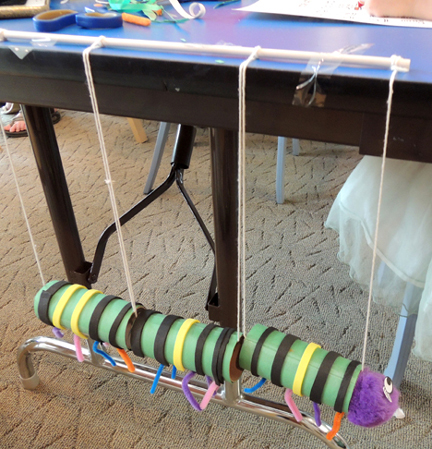 Tape the dowel to the table, and you are free to attach the shoes on a dangling marionette with minimal flopping. ABSOLUTELY BRILLIANT!
Tape the dowel to the table, and you are free to attach the shoes on a dangling marionette with minimal flopping. ABSOLUTELY BRILLIANT!

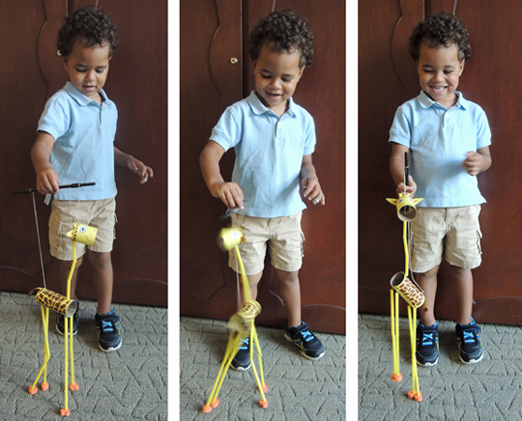
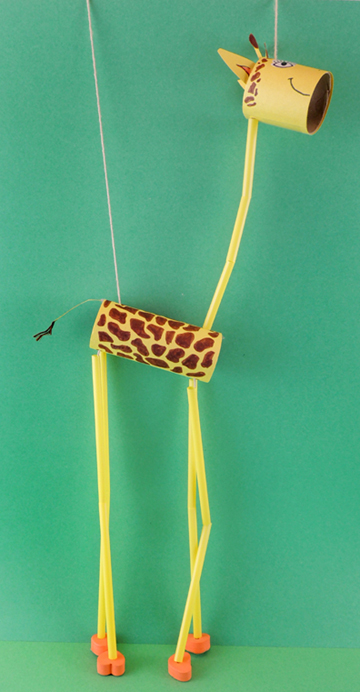 The giraffe has a toilet paper tube body, and a 2″ long toilet paper tube head. Both of the tubes are wrapped with yellow construction paper. We used extra yellow construction paper to create the ears, antlers, and tail. Then we used markers to add the giraffe’s spots, mouth, and nostrils. We used
The giraffe has a toilet paper tube body, and a 2″ long toilet paper tube head. Both of the tubes are wrapped with yellow construction paper. We used extra yellow construction paper to create the ears, antlers, and tail. Then we used markers to add the giraffe’s spots, mouth, and nostrils. We used 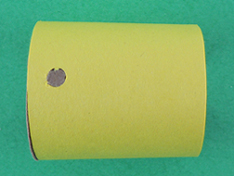 The second hole is positioned underneath the first, on the opposite side of the tube.
The second hole is positioned underneath the first, on the opposite side of the tube.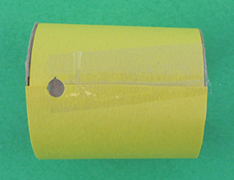 If my description seems a little confusing, this next image should clear things up. Here’s the finished marionette head with the string running through the 2 holes you punched in the head tube.
If my description seems a little confusing, this next image should clear things up. Here’s the finished marionette head with the string running through the 2 holes you punched in the head tube.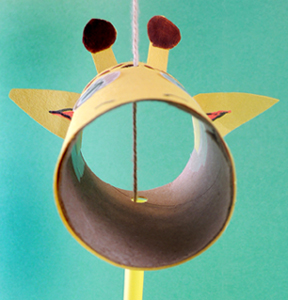 Next, punch a hole at each end of the top of the body tube:
Next, punch a hole at each end of the top of the body tube: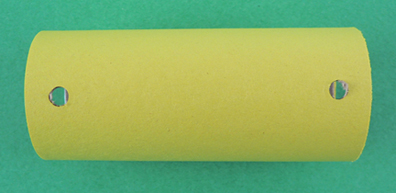 Then turn the tube over and punch 4 holes in the bottom. As you have probably guessed, these 4 holes are where the marionette’s legs attach in the next step.
Then turn the tube over and punch 4 holes in the bottom. As you have probably guessed, these 4 holes are where the marionette’s legs attach in the next step.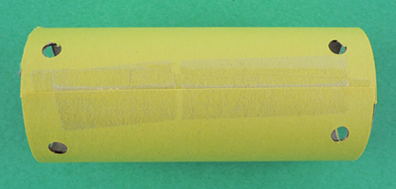 To make the giraffe’s legs, thread a piece of string through a foam bead. Secure the string to the bottom of the foam bead with tape. Cut a drinking straw in half, then slide the 2 pieces down the string towards the foam bead. Thread the loose end of the string into the leg hole you punched in the body tube. Secure the string inside the tube with tape. Repeat these steps with the 3 remaining legs.
To make the giraffe’s legs, thread a piece of string through a foam bead. Secure the string to the bottom of the foam bead with tape. Cut a drinking straw in half, then slide the 2 pieces down the string towards the foam bead. Thread the loose end of the string into the leg hole you punched in the body tube. Secure the string inside the tube with tape. Repeat these steps with the 3 remaining legs.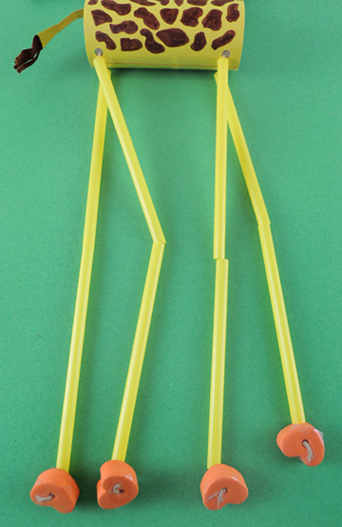 The lower part of the your puppet is done, now for the upper part! The puppet is attached to its drinking straw control stick by two strings. The first string runs from the control stick to the giraffe’s rear end, where it is secured inside the tube with tape. The second string runs through the head, the neck, and then attaches to the body tube with tape. The neck is a drinking straw cut into 3 pieces. We used black masking tape to secure the string to the control stick too.
The lower part of the your puppet is done, now for the upper part! The puppet is attached to its drinking straw control stick by two strings. The first string runs from the control stick to the giraffe’s rear end, where it is secured inside the tube with tape. The second string runs through the head, the neck, and then attaches to the body tube with tape. The neck is a drinking straw cut into 3 pieces. We used black masking tape to secure the string to the control stick too.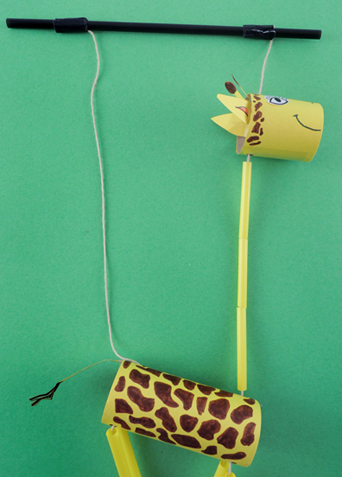 Your marionette is done! We put on some tunes and invited kids to dance their giraffe friends. This resulted in some bouncy, twisty, bendy, jumpy dance moves, as well as a few bars of an original song we’re calling “Dancing, Dancing, Dance-a-lee-Dance!”
Your marionette is done! We put on some tunes and invited kids to dance their giraffe friends. This resulted in some bouncy, twisty, bendy, jumpy dance moves, as well as a few bars of an original song we’re calling “Dancing, Dancing, Dance-a-lee-Dance!”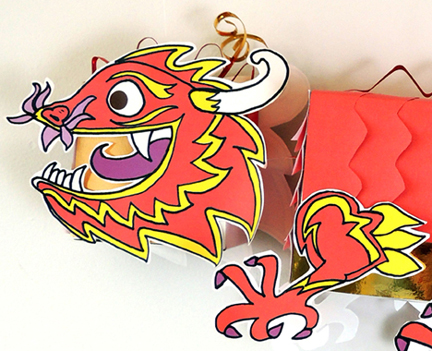 This colorful dragon marionette twists, turns, dives, and flies with you! It was a project at
This colorful dragon marionette twists, turns, dives, and flies with you! It was a project at 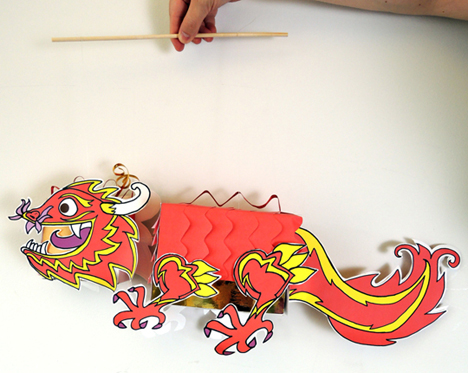 You’ll need:
You’ll need: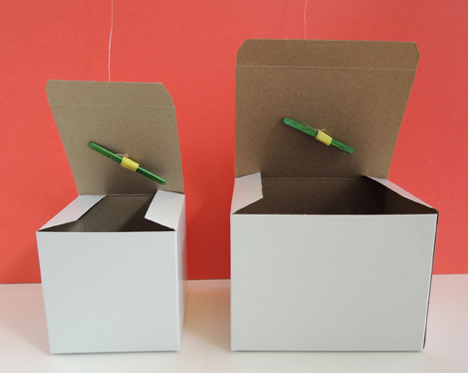 Connect the two boxes together with a 1.25″ x 2.75″ rectangle of poster board that is tabbed at both ends (my tabs were approximately 0.75″ each). Tape the connector’s tabs to each box.
Connect the two boxes together with a 1.25″ x 2.75″ rectangle of poster board that is tabbed at both ends (my tabs were approximately 0.75″ each). Tape the connector’s tabs to each box. Next, wrap the boxes with construction paper (we went with layered strips of construction paper, cut to resemble dragon scales). Cut and color the dragon pieces from the template and attach them to the boxes. If you don’t have time to color in all the template pieces, here is a
Next, wrap the boxes with construction paper (we went with layered strips of construction paper, cut to resemble dragon scales). Cut and color the dragon pieces from the template and attach them to the boxes. If you don’t have time to color in all the template pieces, here is a 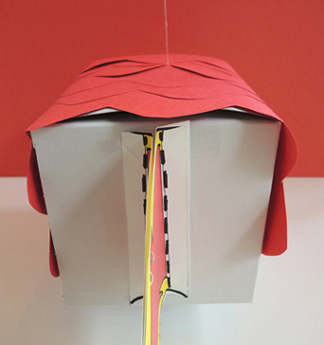 When your dragon is finished, tie the elastic cords to a wooden dowel (and secure the knots with tape if needed). Your dragon is ready to fly!
When your dragon is finished, tie the elastic cords to a wooden dowel (and secure the knots with tape if needed). Your dragon is ready to fly!